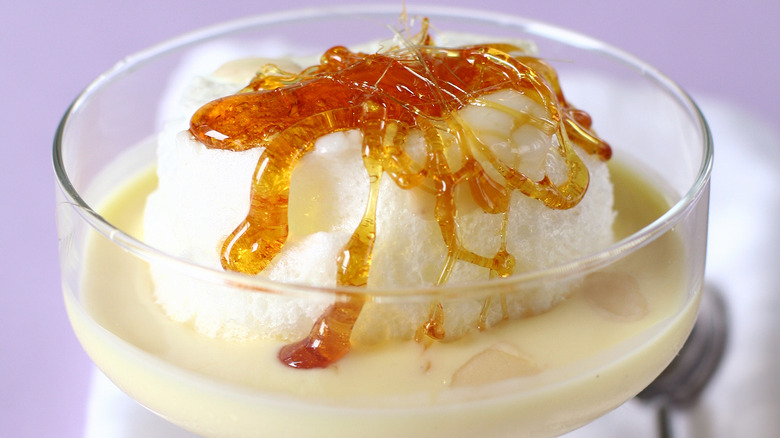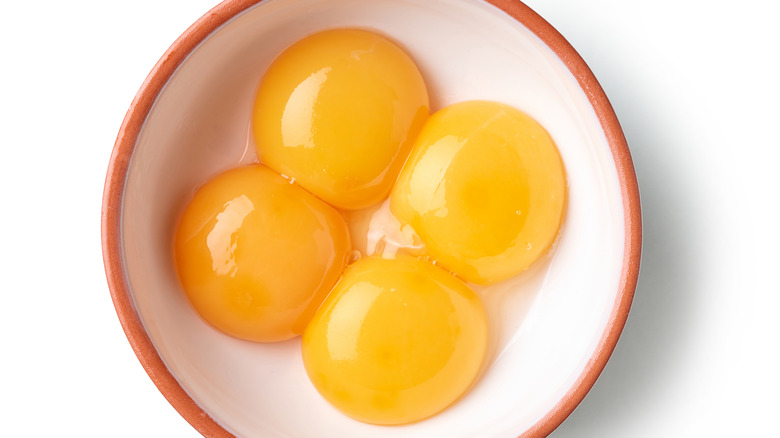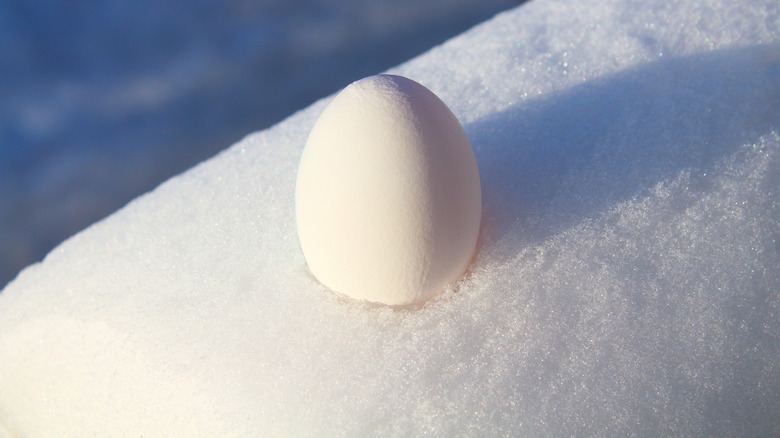Floating Island: The Egg Lover's Dream Dessert
The history of British-French relations has hardly been cordial. Tom McTague highlights some major forces of hostility between the neighboring European countries in The Atlantic, but stresses that "far from being diametrically opposed, France and Britain are more similar than perhaps any other two countries on Earth." McTague draws connections between the nations' political tendencies, populations, wealth statistics, imperialist foundations, and "global reach," as well as shared ideological fears and goals.
We'd also argue that the countries share a love of certain foods that are often inspired by each other's respective culinary traditions, whether or not they like to admit it. One example of this is the French dessert, île flottante, also known as "floating island" or "bird's milk" in English. England and France have their own versions of the creamy treat, but they both call for plenty of eggs, sugar, and cream.
"The English are reared on suet dumplings and steaming semolina, while the French get 'pillowy, airy meringues floating on a velvety bed of vanilla custard,'" says Felicity Cloake in a recipe for The Guardian. "It's no wonder the two nations sometimes find it hard to see eye to eye," she quips. Whether you're dining in Paris, London, or any other part of the world, here's why floating island is an egg lover's dream dessert.
Meringue meets crème anglaise
Since it preceded the applications featured on the recent "Custard Week" episode of "The Great British Baking Show" (or "Bake Off," if you live in the U.K.), let's start with the French version of floating island. As Felicity Cloake notes in The Guardian, France favors a lighter, more "pillowy" texture in its meringues and a "velvety" smoothness in its bed of custard. As Atlas Obscura puts it, île flottante is a "fluffy cloud of baked meringue, set adrift in a puddle of crème anglaise, or light custard."
Per a New York Times recipe for "Île Flottante With Fresh Cherries," the dessert is often topped with a burnt caramel sauce or praline powder. New York Times strays from tradition by adding cardamon and rose water to the cream, plus cherry syrup and crushed pistachios on top; a spin that evokes — though it's not noted in the recipe — common flavors of Persian cuisine.
Brits tend to lean toward a slightly thicker, more toothsome version of the dessert. A recipe in Great British Chefs — borrowed from Fergus Henderson and Trevor Gulliver's "The Book of St. John" — uses egg yolks, caster sugar, and vanilla for a heartier custard. For the islands, "pillowy" meringues are given some heft with cornflour.
From eggs in snow to a tropical floating island
Before floating island, there was an equally ethereal French dish called eggs in snow, which goes back centuries in French cookbooks. According to NPR, dreamily named oeufs à la neige first appeared in the 1651 cookbook "Le Cuisinier François," which was published at the onset of France's "revolution in cookery that would make it the culinary leader of the world for centuries." Per the outlet, many modern recipes are fostered by a revival that took over Instagram a couple of years ago.
To make eggs in snow, simply separate the yolks and whites from an egg, beat the whites into "a stiff foam," and scoop it into a "cloud-like form" on a parchment-lined baking sheet. The yolk goes in a hollow divot in the center of the cloud, and the whole thing gets baked at 450 degrees Fahrenheit in an oven for five minutes, or until the yolk is set.
Atlas Obscura notes that the 19th-century tome "Ms. Beeton's Book of Household Management" introduced custard into the dish. Later, French chef Auguste Escoffier lent a tropical bent to the dessert when he coined "floating island" in a 1902 recipe.


